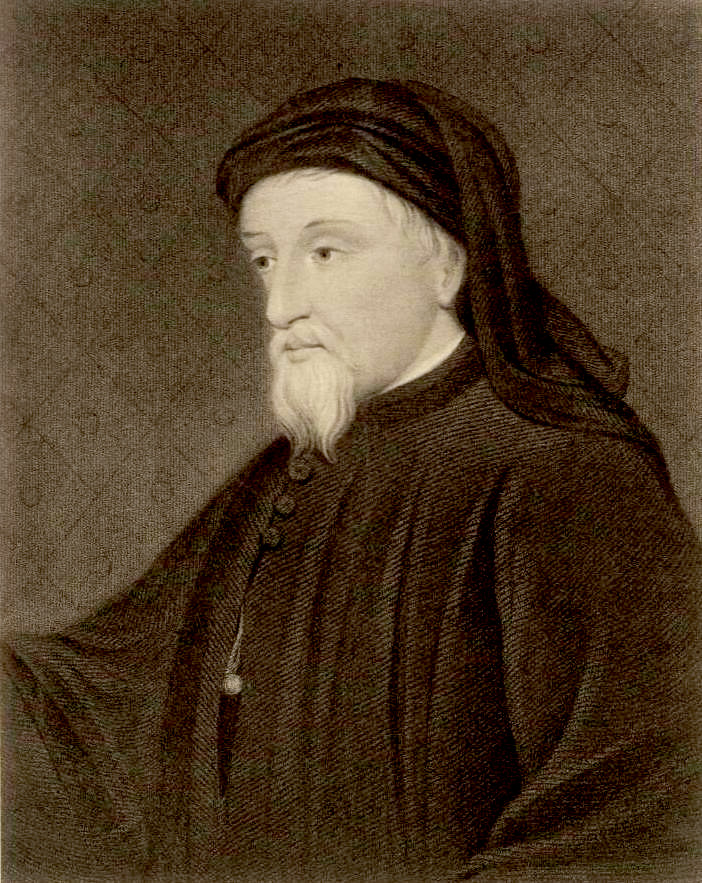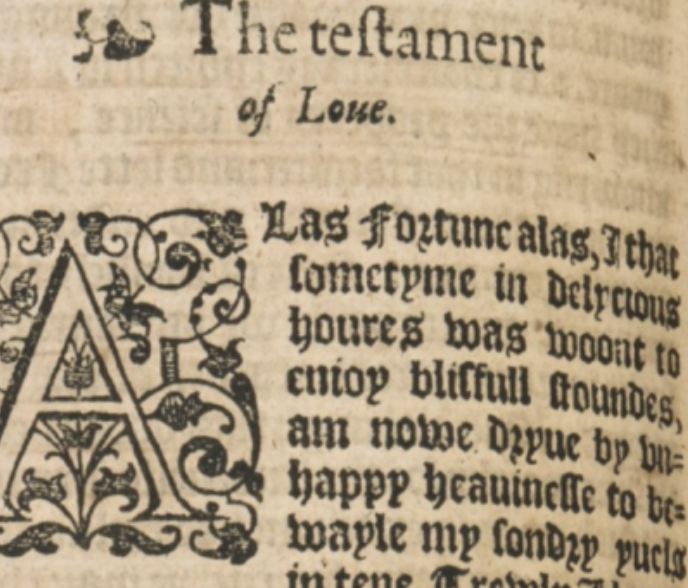Discover the best 14th century authors in our guide, who are perfect for helping you understand what life was like in medieval times.
The end of the Middle Ages was an exciting time in history when writers, philosophers, and poets were developing new ideas that would lead to the start of the Early Modern Era. Artists in the 14th century wrote about ideas including justice, freedom, introspection, and love, which began the practice of looking inward to find happiness. If you’re interested in historical reading, check out the best Michener books in our guide.
Contents
1. Geoffery Chaucer, 1343-1400

Geoffery Chaucer is best known for his work The Canterbury Tales, a still-standing hallmark of English literature. In addition to Chaucer’s work as a poet and author, he was also known for his civil service and his contributions to science as an astronomer and philosopher. While much of the author’s life is unclear, he likely spent time in France and Spain. It’s possible that Chaucer was murdered due to his outspoken belief that the Church of England was corrupt.
“The life so brief, the art so long in the learning, the attempt so hard, the conquest so sharp, the fearful joy that ever slips away so quickly – by all this I mean love, which so sorely astounds my feeling with its wondrous operation, that when I think upon it I scarce know whether I wake or sleep.”
Geoffrey Chaucer
2. John Gower, 1330-1408

John Gower was a close friend of Chaucer and was known for his poetry. The Englishman is known best for his three poems, “Confessio Amantis” (written in English), “Vox Clamantis” (written in Latin), and “Mirour de l’Omme” (written in French). While much of Gower’s life is unknown, historians hypothesize that he may have practiced law in addition to working as an author, as he had a substantial income throughout much of his life. It’s also possible that he sold real estate or wool. His friendship with Chaucer is evident, as historical documents show that he once gave Gower his power of attorney while traveling.
“There is no deception on the part of the woman, where a man bewilders himself: if he deludes his own wits, I can certainly acquit the women. Whatever man allows his mind to dwell upon the imprint his imagination has foolishly taken of women, is fanning the flames within himself — and, since the woman knows nothing about it, she is not to blame. For if a man incites himself to drown, and will not restrain himself, it is not the water’s fault.”
John Gower, Confessio Amantis, Volume 1
3. Liu Ji, 1311-1375

Liu Ji was a philosopher, artist, and well-known military strategist during Chinese history’s Ming and Yuan dynasty periods. Known to many as the Chinese Nostradamus, Liu Ji’s prophecies were well-trusted by the Chinese military. Some believe that he correctly predicted several events, including the Xinhai Revolution of 1911 and the Tumu Crisis in 1449. The author wrote about many topics, including magnetism, fungshui, astronomy, statecraft, and technology. His best-known prophecies were a part of his lyrical poem known today as the Shaobing Song.
4. Walter Hilton, 1340-1396
Walter Hilton was a mystic who lived much of his life in solitude. His first piece of writing was a letter entitled On the Image of Sin, which Hilton composed in Latin. The author wrote heavily on the function of spirituality and religion. Many of his ideas were detailed in his work entitled Letter on Reading, Intention, Prayer and Meditation. Hilton’s works centered around the question of what it meant to serve God perfectly and how readers could meld their quest for being closer to God with the needs of day-to-day life.
“The purpose of prayer is not to inform our Lord what you desire, for He knows all your needs. It is to render you able and ready to receive the grace which our Lord will freely give you. This grace cannot be experienced until you have been refined and purified by the fire of desire in devout prayer. For although prayer is not the cause for which our Lord gives grace, it is nevertheless the means by which grace, freely given, comes to the soul.”
Walter Hilton, The Ladder of Perfection
5. John Mirk

John Mirk wrote literature with the intent of helping priests with their vocational work. Mirk’s most famous piece was Festial, which contained a collection of sermons. Many literary critics today regard Mirk’s works as an intent to appeal to the preferences of the audiences of the time. Mirk’s life beyond his work is a mystery. His last name indicates that it’s likely that he was born in Northern England and had Norse influences.
“And when they saw that his fingers were bloody and that blood ran from Christ’s body into the chalice, they were terrified to the extent that they cried out in real fear: “Blessed be you that have this grace so to handle Christ’s body. We believe now that this is truly God’s body and his blood that dropped there into the chalice. But now pray to him, whom you have there in your hands, that he send no vengeance upon us for our disbelief.”
John Mirk, Festial
5. Francesco Petrarca, 1304-1374

Francesco Petrarca was an Italian poet and scholar. Petrarca refused to make a life based on making money, stating, “I couldn’t face making a merchandise of my mind.” He traveled throughout Europe during his life and has been called the first tourist to explore new areas with no motive of making money. Known as one of the first humanists, Petrarca is known for several works, including Fragments of Vernacular Matters, On the Solitatry Life, and Petrarch’s Guide to the Holy Land.
“It is more honorable to be raised to a throne than to be born to one. Fortune bestows the one, merit obtains the other.”
Francesco Petrarca
6. John Barbour, 1320-1395

John Barbour was a Scottish poet best known for his poem The Bruce (sometimes called The Brus), a substantial narrative that is a mix of patriotism and history. Barbour wrote the work while serving as a part of the king’s household. The Bruce discusses freedom at length and promotes the idea that freedom must be preserved no matter the cost.
“A! freedom is a noble thing!
John Barbour, The Bruce
Fredome mayss man to haiff liking;
Fredome all solace to man giffis:
He levys at ess that frely levys!”
7. Guillaume de Machaut, 1300-1377

French poet and composer Guillaume de Machaut was a key influencer in medieval poetry and music development. The artist worked to preserve his music, resulting in his compositions being some of the few that have stood the test of time by surviving to the present day.
The author composed approximately 400 poems. Some of his lyrics were set to music, but most were not. Themes of Machaut’s poetry include love, religion, captivity, and war. Machaut’s poems were meant to be spoken aloud and were typically written in the first-person style. The author’s most well-known works include The Cure of III Fortune, Judgement of the King of Bohemia, and Story of the 4 Birds.
“It cares nothing for melancholy, nor for a man who sorrows over what is of no importance, but ignores, instead, such folk. It brings joy everywhere it’s present; it comforts the disconsolate, and just hearing it makes people rejoice.”
Guillaume de Machaut
8. Giovanni Boccaccio, 1313-1375

Giovanni Boccaccio was an Italian renaissance poet and writer known today as one of the most prominent figures in English literature. The Decameron is one of the author’s most well-known works. The collection of 100 short stories details the lives of a fictional group of seven women and three men who took shelter near Florence to escape the Black Death.
Much of Boccaccio’s life was spent moving through Italy, living in Certaldo, Florence, Ravenna, Romagna, Milan, and Avignon. In addition to creating his works, the author also influenced decisions to translate the works of Homer, Aristotle, and Euripides. Today, the poet’s works are housed in a monastery in Santo Spiriton in Florence.
“You must read, you must persevere, you must sit up nights, you must inquire, and exert the utmost power of your mind. If one way does not lead to the desired meaning, take another; if obstacles arise, then still another; until, if your strength holds out, you will find that clear which at first looked dark.”
Giovanni Boccaccio
9. Mpu Prapanca

Mpu Prapanca is known for his work Nagarakretagama, also known as Desawarnana. This Javanese work tells the story of the Majapahit Empire, located in what is now Southeast Asia, specifically, the area around the Island of Java. Prapanca’s tale details a military expedition that placed the Cakranegara royal house of Lombok against the military of the Dutch East Indies. The work details how priests at the time conducted mystical activities to provide military leaders with magical powers.
Prapanca’s work is heralded for providing detailed descriptions of what life in Southeast Asia was like in the 14th century, as it explains the setup of religious areas, how royal people of the time lived, and how important areas were protected. Nagarakretagama also details religious ceremonies that took place at the time. Today, the preserved manuscript is located at the National Library of Indonesia after spending many years at the Leiden University library in the Netherlands.
“At the waxing moon, on the twelfth night, they invited there that swah (soul), sutra (sacred texts) recital was performed and homa (fire offering) worship, on the other hand also parίshrama (amphidromy); they were (only considered) complete at the arrival of the swah (soul) again (on earth). The honoured holy pushpa (flower effigy) was worked on with yoga (concentration); in the night was performed the eminent pratistha (placing) ceremony.”
Mpu Prapanca, Nagarakretagama
10. Thomas Usk, 1354-1388

Thomas Usk was a writer and bureaucrat best known for his work The Testament of Love. The London-based author’s work was previously attributed to Geoffrey Chaucer. Usk had a difficult life, and after working as a servant to John Northampton, he was arrested and offered release only if he gave up information regarding Northampton. Usk refused, upsetting the Duke of Gloucester, head of the part of the Merciless Parliament.
Usk wrote The Testament of Love in prison as a cry for help–the start of the work forms an acrostic poem that translates to a call for a saint to have mercy on Usk. Usk’s refusal to testify against Northampton led to the Merciless party’s prosecution, resulting in Usk being hanged and beheaded in 1388. Looking for more? Check out our round-up of essays about history!
“Howe shulde I withouten my blysse, my herte, my desyre, my joye, my
Thomas Usk, The Testament of Love
goodnesse endure in this contrarious prison, that thynke every hour in the day an hun-
dred wynter?”